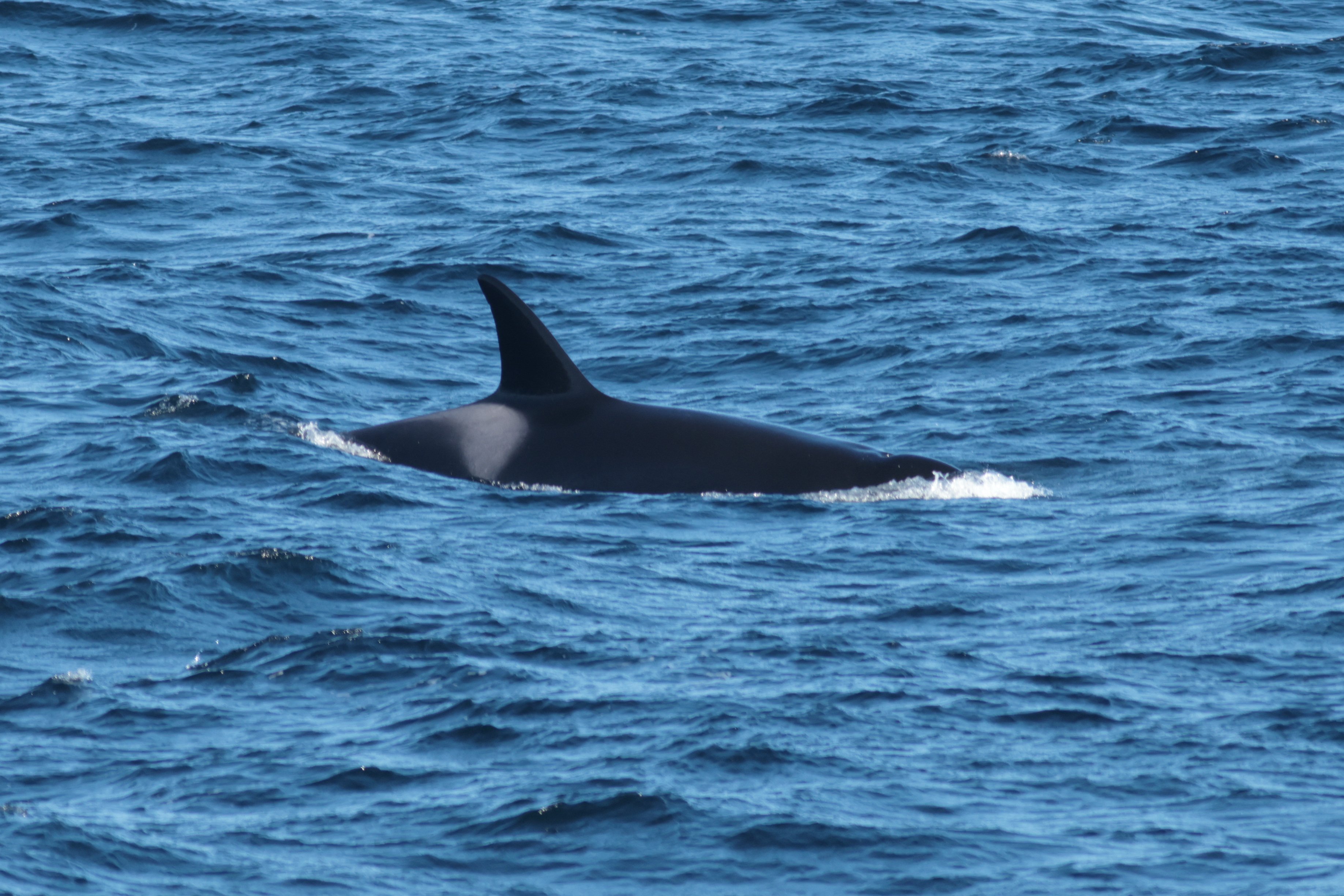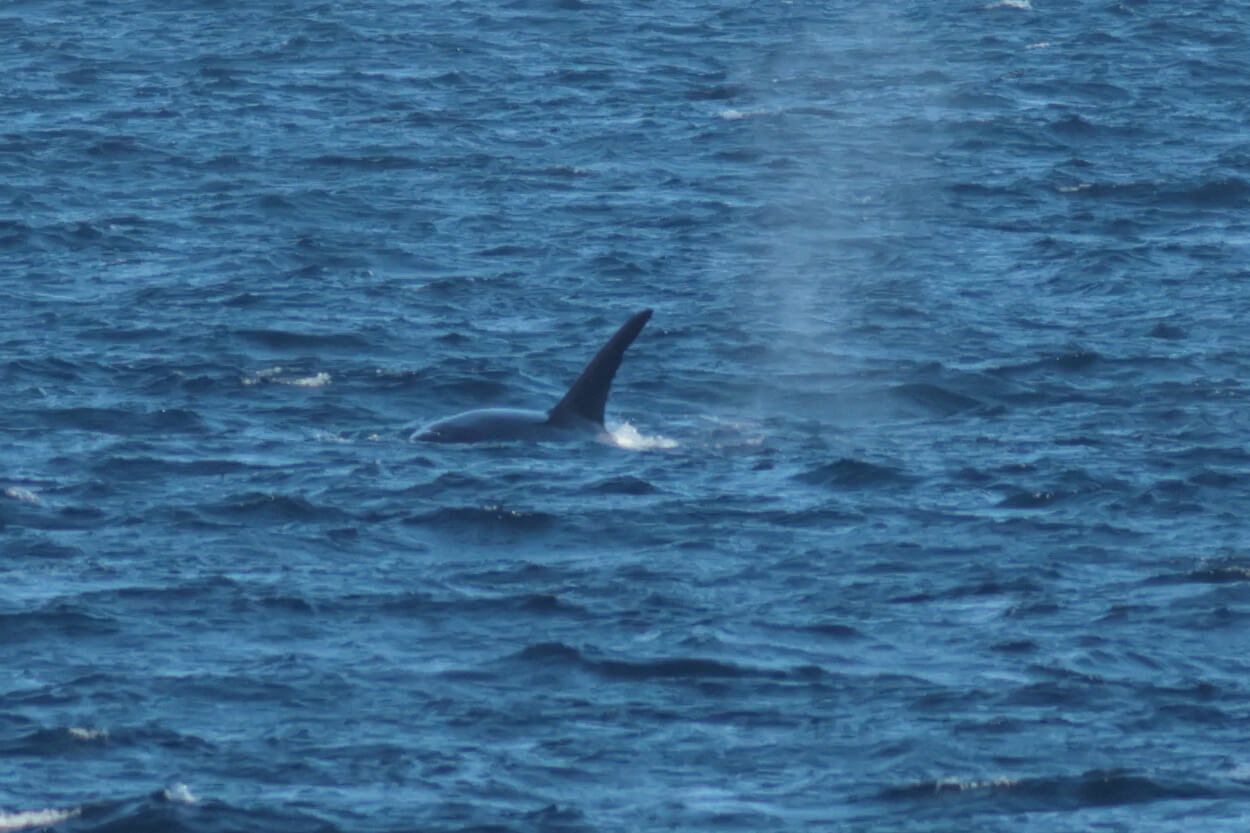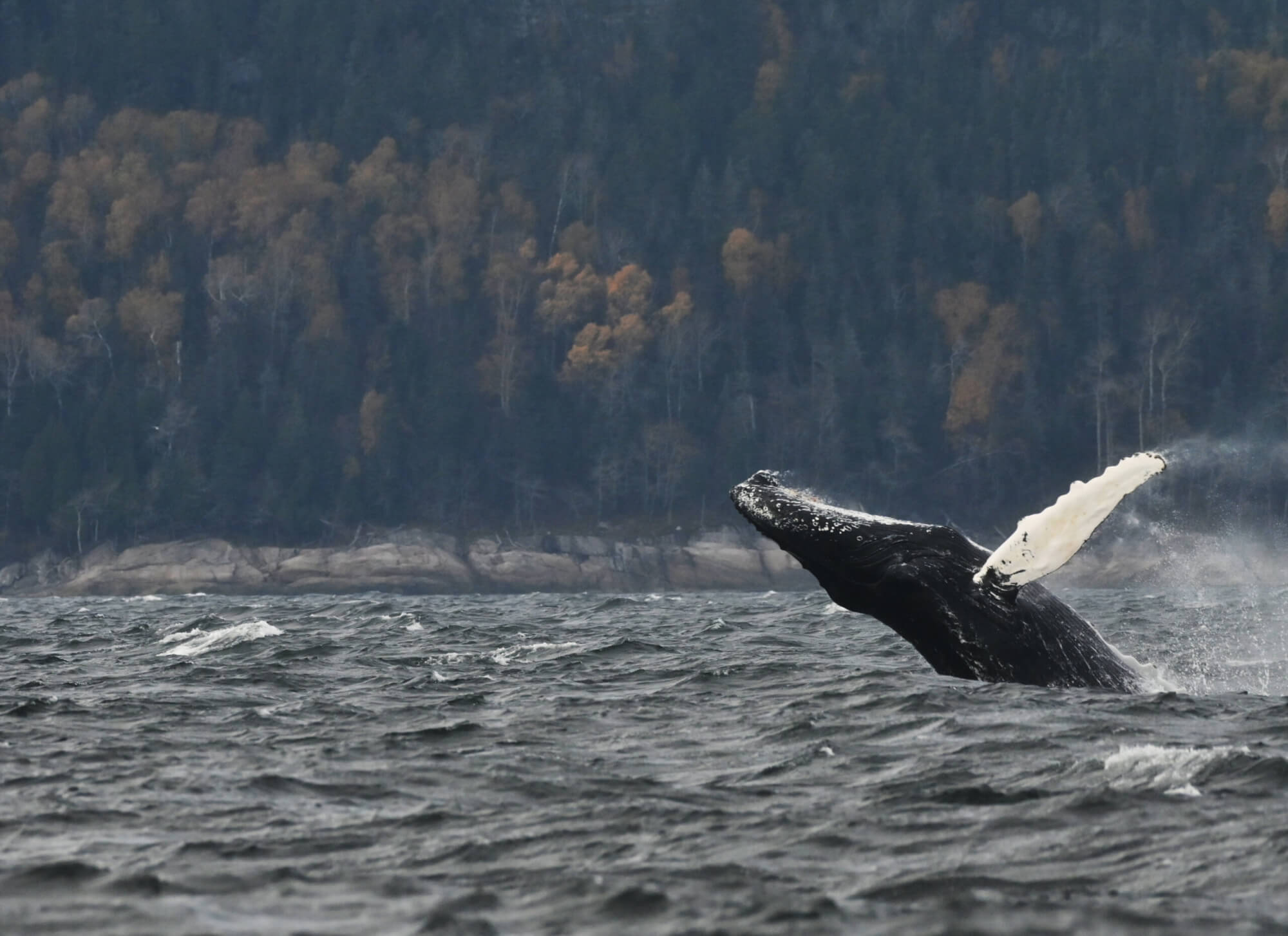Rare visitors to the St. Lawrence were observed this past week in Quebec’s Basse-Côte-Nord (Lower North Shore) region: killer whales. In the estuary, humpback and fin whales have not yet said their final goodbyes and in fact are still quite active!
Off the village of La Tabatière on the Lower North Shore, near the island of Gros Mécatina, a group of at least three killer whales was observed for around thirty minutes.
Even though this species has been featured on both TV and in theatres, the population of the northwest Atlantic remains a bit enigmatic. Scientists estimate that the population numbers at least 70 individuals. In the St. Lawrence, documents from the 1940s mention that killer whales were abundant in the estuary at the time. In the 1990s, a group of four to five killer whales regularly visited the Gulf of St. Lawrence and the Jacques-Cartier Strait, while in the estuary, the most recent sighting dates back to 2003, when 2 killer whales were seen off the coast of Les Bergeronnes.
Breaching humpbacks
For one marine mammal enthusiast, a day on the multi-hued waters resulted in some enjoyable observations in the Saguenay-St. Lawrence Marine Park. Despite the turbulent conditions in the estuary, a number of whales took the opportunity to poke their heads out of the water. “It really wasn’t all that straightforward to observe the animals,” he explains. Fortunately, multiple breaches allowed us to spot the cetaceans easily. They were humpback whales, a species known for its aerial acrobatics. One of them was identified as Siam, an individual known since 1981. This whale owes his name to the colour pattern of his caudal fin, which resembles the head of a Siamese cat. “We sometimes like to say that when Siam doesn’t show his tail, it’s because he’s old,” explains the naturalist. But yesterday, the oldest humpback was just as spirited as any of the others. There was pectoral slapping, much tail raising and breaches. I like to believe that this legend will still be with us for several more years.”
These spectacular behaviours were also spotted from the Tadoussac dunes! In total, more than ten humpbacks are still present in the estuary. In the town of Franquelin, this species was seen cruising along the coast just about every day last week. This species of baleen whale was also seen in Gaspé Bay. It seems the end of the season is a long way’s off!
Fin whales at full throttle
After being discreet all summer long, fin whales have been quite active lately! Five individuals were tallied in the Saguenay-St. Lawrence Marine Park. Near Franquelin, the large spout of a fin whale was spotted one rainy day.
Colours offshore
The diversity of marine mammals that can be admired is still incredible, even in these final days of October! Belugas have been observed in the mouth of the Saguenay by the dozens, their white backs sparkling on the water surface. From Mont-Saint-Pierre in the Gaspé Peninsula, one vacationer even reported having seen around fifty! White-sided dolphins have become commonplace between Tadoussac and Les Bergeronnes, while leaping harbour porpoises and minke whales were observed both in Franquelin and in Gaspé Bay. Lastly, harbour seals were admired in the Bay of Sept-Îles, resting on the rocks at the water’s edge.
Where are the whales this week? Observation map
These data were reported by our network of observers. They give an idea of the presence of whales and in no way represent the actual distribution of whales in the St. Lawrence. Use it for fun!
Click on the whale or seal icons to discover the species, the number of individuals, additional information or photos of the sighting. To enlarge the map, click on the icon in the top right-hand corner. The map works well on Chrome and Firefox, but not so well on Safari.
To display the list of sightings, click on the icon in the top left-hand corner.










